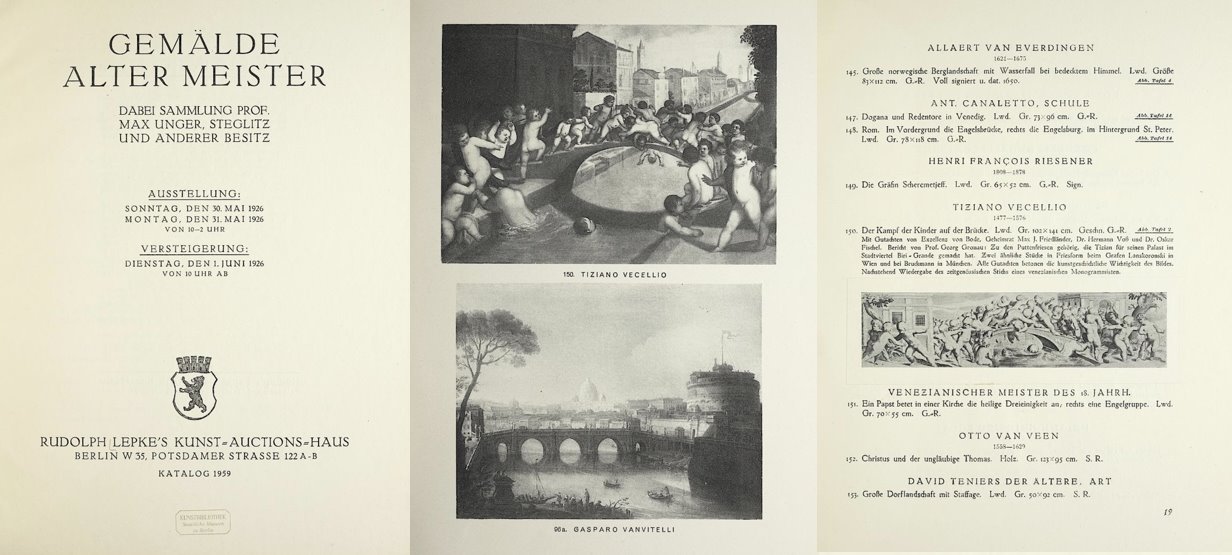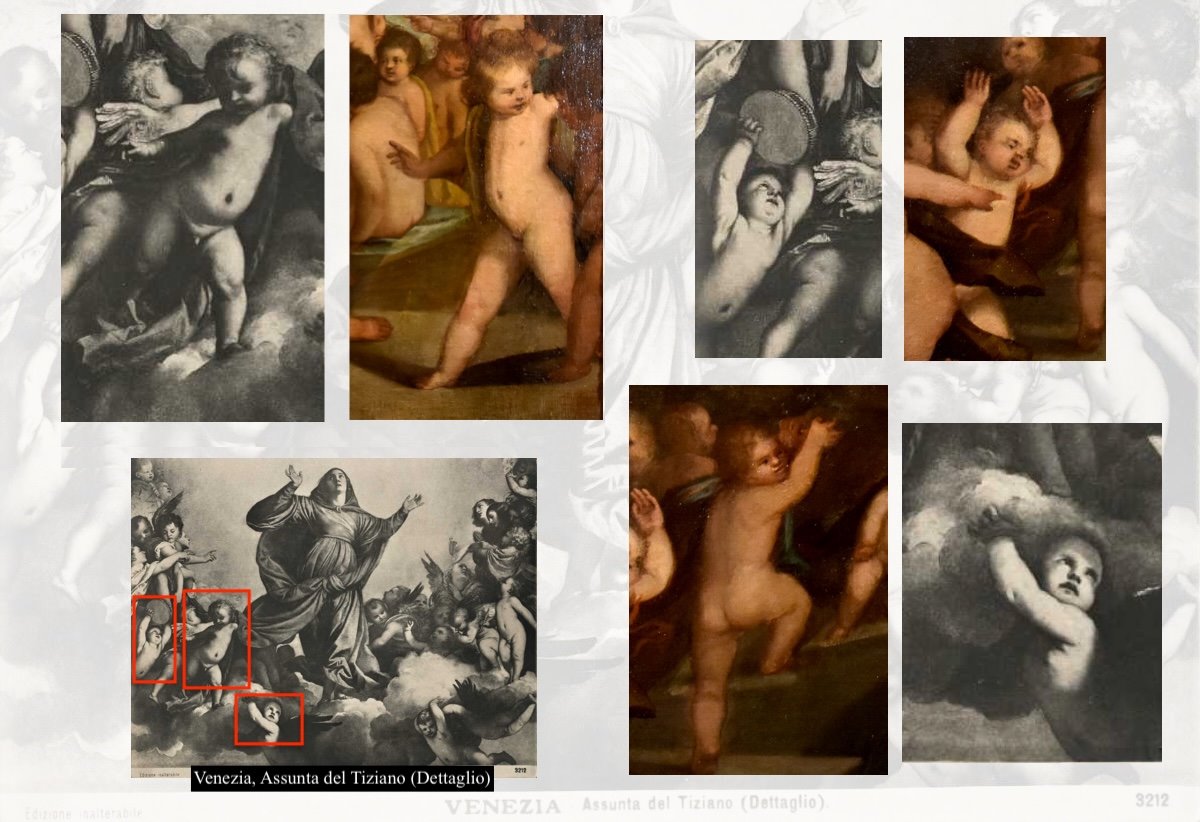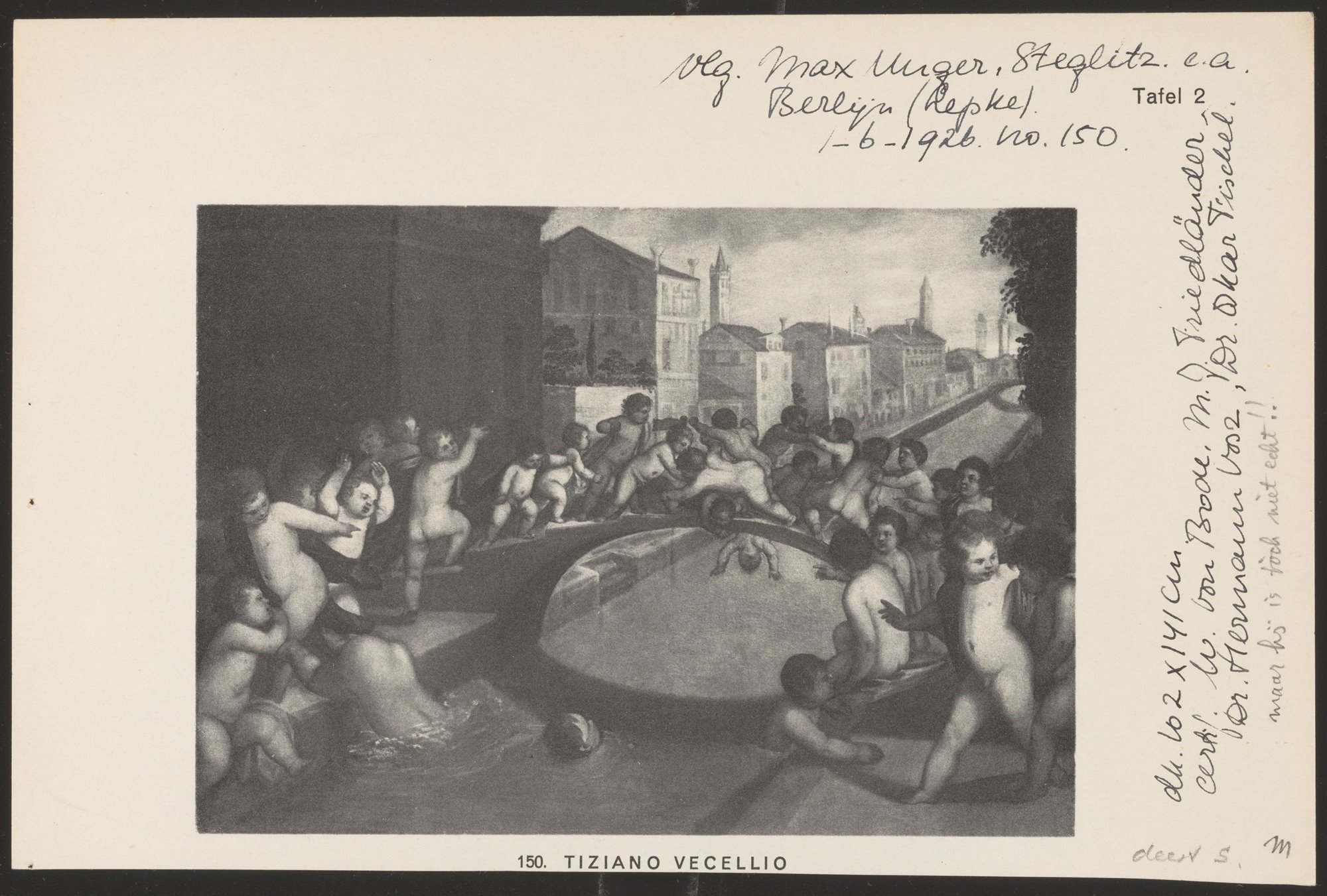Lotta di putti sul ponte dei Pugni a Venezia
Tiziano Vecellio (Pieve di Cadore 1490 - Venezia 1576) Bottega
Tiziano Vecellio (Pieve di Cadore 1490 - Venice 1576) Workshop
Putti fighting on the Ponte dei Pugni in Venice
Venetian school, late 16th century
Oil on canvas
105 x 144 cm
In frame 128 x 167 cm
Provenance: Lepke Kunst-Auction-Haus, Berlin, auction of 1 June 1926, lot 150, as Tiziano Vecellio, attributed to Wilhelm von Bode (1845-1929)
Of the more than four hundred bridges that dot the countless canals of Venice, there is one in particular that is linked to one of the city's most unique historical events: the Ponte dei Pugni, located in the Dorsoduro district near Campo San Barnaba, which owes its name to an ancient tradition, now abandoned, that provided the theme for our interesting painting.
It was once a tiny battlefield suspended above the canal, where a real “War of the Fists” took place, unusually depicted here with children fighting animatedly.
Always considered one of Venice's most heartfelt traditions, dating back to the 15th century but then banned in the 18th century, it is still commemorated today during the Venice Carnival: it was nothing more than a brawl between the inhabitants of two opposing factions, the Castellani and the Nicolotti, who clashed on the upper part of the bridge, which at the time had no railings, with the aim of throwing their opponents into the water.
The painting, which belongs to the Venetian school of the 16th century, is traditionally attributed to Titian (Pieve di Cadore 1490 - Venice 1576), made in 1926 by art historians Wilhelm von Bode (1845-1929), founder of the Kaiser Friedrich Museum in Berlin in 1904, Max Jakob Friedländer (1867-1958) and Hermann Voss (1884-1969).
Below is the link to the work published in the RKD catalogue: https://research.rkd.nl/nl/detail/https%3A%2F%2Fdata.rkd.nl%2Fimageslite%2F1580566
Nevertheless, for reasons of caution, we prefer to attribute the painting to his workshop, leaving open the possibility that the master may have played a part in the curious composition (*1).
Many of Titian's works feature cherubs, which are not simply decorative elements but have an important symbolic role: they often represent youth, innocence and light, but can also have connections with deeper themes such as love, life and death.
The composition of our painting closely follows one of the friezes, entitled “The Fight of the Children on the Bridge”, which Titian created for his palace in Venice, located in the Biri district of the Cannaregio neighbourhood. Two similar works, in the form of friezes, are owned by Count Lanskoronski in Vienna and Bruckmann in Munich.
Below is a reproduction of a contemporary engraving by a Venetian monogramist.
%20copia%202.jpg)
%20copia%202.jpg)
The image suggests a sense of vitality that captures the viewer's soul, and for this reason it must be interpreted allegorically: these little children intent on having fun are therefore a hymn to life and an invitation to abandon oneself to the impulses and sensations it offers us.
By way of comparison, we can mention the large altarpiece of the “Madonna Assunta” (Church of S. Maria Gloriosa dei Frari in Venice), where many of the poses of the cherubs depicted are mirror images of those in our painting (see photos of details).
(*1) It remains philologically difficult to attribute the work to a specific name, even within the prolific Titian workshop that flourished in the 17th century with Marco Vecellio (Venice, c. 1570 - c. 1650). For more than half a century, a host of painters of different origins, qualities and training revolved around Titian. The workshop included painters such as Francesco and Orazio Vecellio, Paris Bordon, Girolamo Dente, Polidoro da Lanciano, Jan van Calcar, Valerio Zuccate, Emanuel Amberge and many others. In addition to the names just mentioned, considered his most loyal followers, many other assistants, disciples and occasional collaborators followed one another for a short time. Among the many foreigners were the Dutchmen von Calcar and Sustris, the Bavarians Hans Mielich and Christoph Schwarz, and El Greco himself.
ADDITIONAL INFORMATION:
The work is sold complete with a pleasant frame and is accompanied by a certificate of authenticity and a descriptive iconographic card.
We take care of and organise the transport of purchased works, both in Italy and abroad, through professional and insured carriers.
It is also possible to view the painting in the gallery in Riva del Garda, where we will be delighted to welcome you and show you our collection of works.
Please contact us, without obligation, for any further information.
Follow us on:



 copia 2.jpg)
.jpg)

.jpg)

